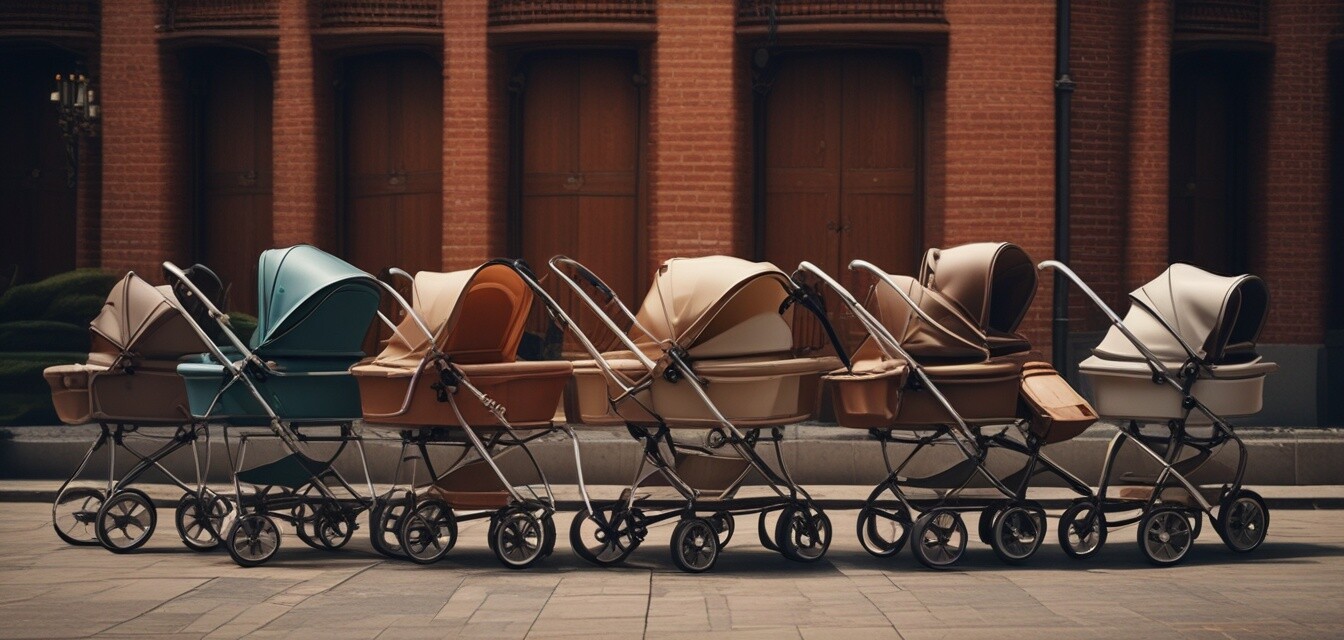
The Evolution of Stroller Designs Over the Years
Key Takeaways
- Stroller designs have evolved significantly from simple wooden frames to modern multifunctional options.
- Key innovations include the introduction of lightweight materials, safety features, and advanced mobility options.
- Different types of strollers cater to various parenting styles and lifestyles, including jogging, travel, and everyday use.
Strollers have become an essential part of modern parenting, offering convenience and comfort for both parents and children. The evolution of stroller designs highlights how innovations have transformed the way we transport our little ones. In this article, we will trace the history of stroller designs, shedding light on key innovations that have shaped their functionality and style.
A brief history of strollers
The journey of stroller designs dates back to the early 1700s, with the introduction of the first similar contraption, a simple horse-drawn carriage for children. Over the centuries, various adaptations have led to the strollers we know today. Below is a timeline showcasing significant milestones in stroller history:
| Year | Milestone |
|---|---|
| 1733 | First stroller invented by William Kent – a lavish, horse-drawn carriage for children. |
| 1850 | Introduction of metal frames, improving durability and ease of use. |
| 1965 | First umbrella stroller introduced; lightweight and foldable for convenience. |
| 1984 | Jogging strollers introduced, allowing parents to exercise while taking their children along. |
| 2000s | Travel systems gain popularity, combining infant car seats and strollers for seamless transitions. |
Key innovations in stroller design
As technology and design philosophies have progressed, several key innovations have emerged, greatly enhancing the functionality and appeal of strollers:
1. Lightweight materials
Modern strollers utilize lightweight materials such as aluminum and high-strength plastics, making them easier to maneuver and transport. This transition has been especially beneficial for parents who often navigate urban environments.
2. Safety features
Safety is always a top priority for parents. Today's strollers are equipped with advanced safety features such as:
- 5-point harness systems
- Brakes that can be engaged with a simple foot pedal
- Reflective materials for visibility during twilight hours
3. Adaptable designs
Many modern strollers are designed to accommodate growing children and changing parental needs, including:
- Convertible strollers that transition from infant to toddler use
- Strollers with adjustable seats, allowing for different reclining angles
- Modular designs that enable customization with accessories such as cup holders and storage baskets
4. Eco-friendly options
As parents become more environmentally conscious, many stroller manufacturers have begun producing eco-friendly options crafted from sustainable materials and featuring recyclable components.
Popular types of strollers
Today’s market offers a wide range of stroller types tailored to different needs and lifestyles. Here’s a brief overview of the most common stroller categories:
| Type of Stroller | Description | Best For |
|---|---|---|
| Convertible Strollers | Can be used in multiple modes, adapting as the baby grows. | Parents looking for a long-term solution. |
| Jogging Strollers | Designed for stability and speed during runs or walks. | Active parents who want to exercise with their child. |
| Lightweight Strollers | Compact and easy to carry; often foldable. | Parents who travel often or have limited storage space. |
| Travel Systems | Includes an infant car seat that clicks into the stroller. | Parents needing a convenient transport solution. |
| Umbrella Strollers | Lightweight and easy to fold, resembling an umbrella. | Occasional use and quick outings. |
Conclusion
The evolution of stroller designs reflects the changing needs and lifestyles of parents. With advancements in technology and a focus on safety, convenience, and style, strollers continue to adapt, providing essential support for families on the go. Whether you prefer a robust jogging stroller for outdoor adventures or a lightweight option for city living, the market today has something for every parent’s needs.
Tips for choosing the right stroller
- Consider your lifestyle and how often you’ll use the stroller.
- Check the weight and portability, especially if you will be traveling or using public transport.
- Look for safety features that meet current industry standards.
- Research and read reviews to find the best fit for your family.
- Visit a store to test the stroller first-hand to ensure comfort and usability.
Pros
- Modern strollers are more versatile than ever.
- Innovations enhance safety and ease of use.
- Stylish designs that cater to different aesthetics.
Cons
- Some strollers can be expensive.
- Weight and bulkiness may be an issue for certain models.
- Compatibility issues with car seats if not part of a travel system.
Stay informed about the latest trends and developments in stroller technology. For more insights, visit our News and Trends section.